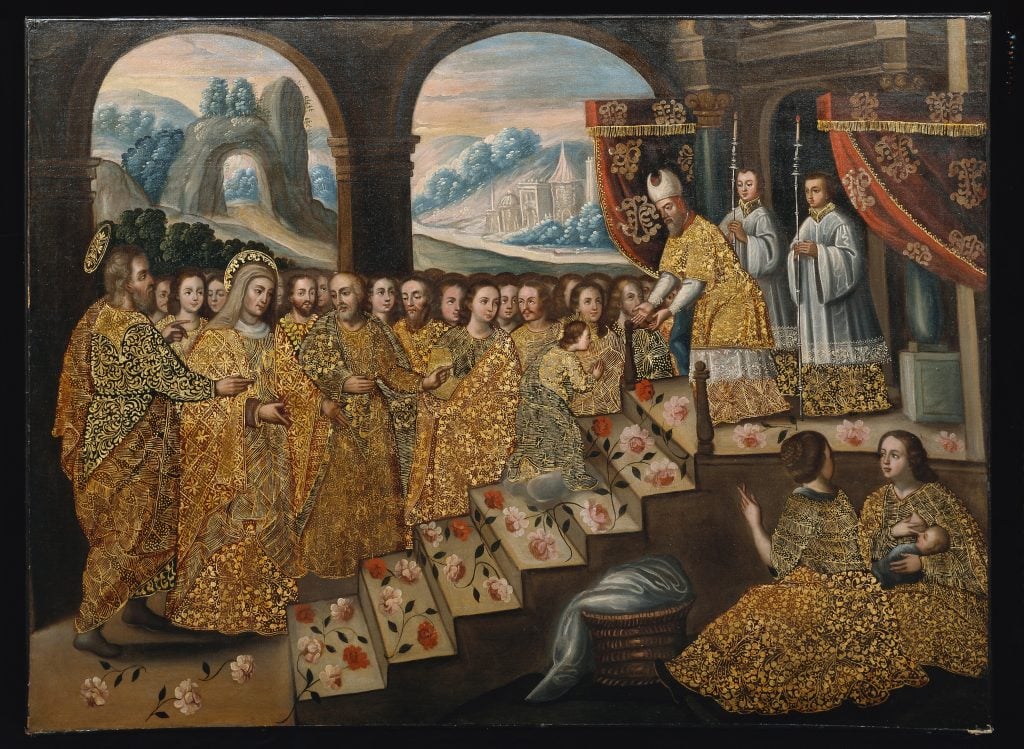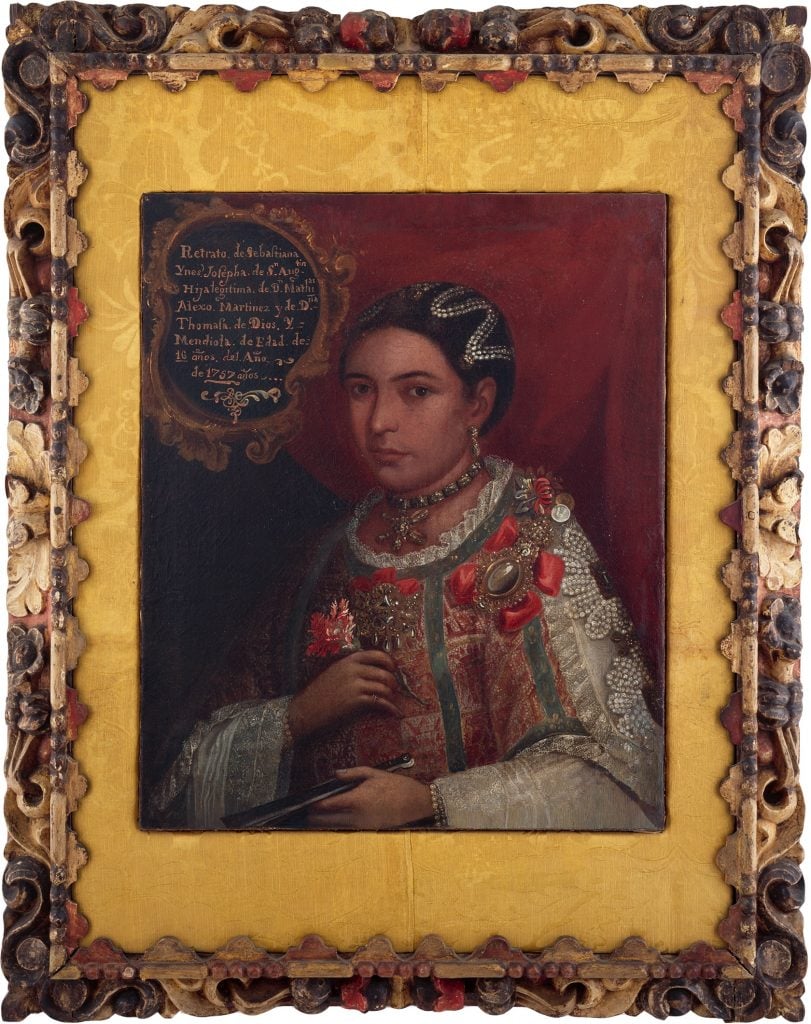Style
A New Exhibition at the Blanton Museum in Texas Is Using Fashion to Explore the Art and Hidden Histories of Colonial Latin America
We asked “Painted Cloth” curator Rosario I. Granados to decode the clothing in some of the art on display.

We asked “Painted Cloth” curator Rosario I. Granados to decode the clothing in some of the art on display.

Christine Ajudua

While there’s long been a vogue for exhibiting fashion in museums, Austin’s Blanton Museum of Art is using fashion to explore art history. Last week, it opened “Painted Cloth: Fashion and Ritual in Colonial Latin America” (through January 8, 2023), with more than 70 objects produced across Latin America in the 1700s.
“The elaborate fabrics, fashion, and other richly textured works in this show will give our audiences a good look into everyday life during an era of dynamic cultural exchange,” said the Blanton’s director Simone Wicha, in a statement. “And show how clothing—then as now—is so intertwined with our identities.”
This fashion is hardly frivolous. From garments and textiles to paintings and sculptures that depict them, the exhibition explores the making and meaning of such materials in contexts both sacred and mundane. It also spotlights the tussle between Indigenous and European aesthetics and cultural traditions at a time when new political, social, and religious hierarchies were being imposed in Latin America under Spanish rule.

In Presentation of the Virgin in the Temple, an 18th-century work of oil and gold on canvas, tunics and mantles are gilded with brocateado, a gold-brocade technique from the Cusco School of painting, which introduced Andean elements to Catholic subjects. Collection of Carl and Marilynn Thoma. Courtesy of the Blanton Museum.
The objects on display are woven with complex narratives of status and survival, and they span class, gender, race, religion, and the legacies of colonialism. They include portraits commissioned by the Incan elite, wearing intricate Indigenous clothing to amplify their royal ancestry, as well as by Latin-American sitters seeking social prestige by dressing in European finery. Rare Mexican and Peruvian paintings on view prominently showcase women and people of color dressed as masters of crafts that were largely closed off to them.
“Garments are a lens by which we can recognize the many inequalities and societal contradictions that characterized the social fabric of this contested era,” said Rosario I. Granados, the show’s lead curator, “which altered the lives of so many Indigenous communities, but also the beauty of the Spanish America’s artistic production and thereby the diverse cultures of its peoples.”
“This exhibition brings visibility to the art of the Spanish Americas,” she added, “which continues to be misrepresented and needs to be acknowledged in all its inventiveness.”
The show is especially timely as museums are scrambling to decolonize their collections. “Recognizing the beauty of these artifacts on their own terms and not as derivative of European models is a way to effectively challenge the visual oppression imposed by the western canon,” Granados told Artnet News.
This is, the curator added, “an exhibition centered on the power of artistic representation and the deep symbolism of fabric.” She talked us through a few of the paintings on display, dissecting dress codes to reveal lesser-known histories of colonial Latin America.

Unknown artist, Portrait of Sebastiana Ynes Josepha de San Agustín, 1757, Mexico City; oil on canvas. Museo Franz Mayer, Mexico City. Courtesy of the Blanton Museum.
“This portrait was most likely made to celebrate the 16-year-old sitter’s entrance into the Corpus Christi Convent, an institution founded in 1720 specially for Mexico City’s Indigenous nobility. She wears a traditional huipil, an Indigenous overblouse, ornamented with fine European lace at the neck and cuffs, showing that the power of Indigenous leaders still carried weight 200 years after the Spanish invasion.”
![Unknown artist, <i>De Lobo y Negra, Chino</i> [<i>From Lobo—of Indigenous and Black Descent—and Black, a Chino is Born</i>], circa 1775, Mexico City; oil on copper. Museo de América, Madrid. Photo: Javier Rodríguez. Courtesy of the Blanton Museum.](https://news.artnet.com/app/news-upload/2022/08/De-Lobo-y-negra-chino--1024x793.jpg)
Unknown artist, De Lobo y Negra, Chino [From Lobo—of Indigenous and Black Descent—and Black, a Chino is Born], circa 1775, Mexico City; oil on copper. Museo de América, Madrid. Photo: Javier Rodríguez. Courtesy of the Blanton Museum.
![Unknown artist (circle of Cristóbal Lozano Español), <i>Yndia Serrana. Produce Mestiso</i> [<i>Spanish man and Indigenous woman from the highlands, produce mestizo</i>], circa 1770, Lima; oil on canvas. Museo Nacional de Antropología, Madrid. Courtesy of the Blanton Museum.](https://news.artnet.com/app/news-upload/2022/08/Espan%CC%83ol.-Yndia-Serrana-o-cafetada.-Produce-Mestiso.-1024x858.jpg)
Unknown artist (circle of Cristóbal Lozano Español), Yndia Serrana. Produce Mestiso [Spanish man and Indigenous woman from the highlands, produce mestizo], circa 1770, Lima; oil on canvas. Museo Nacional de Antropología, Madrid. Courtesy of the Blanton Museum.